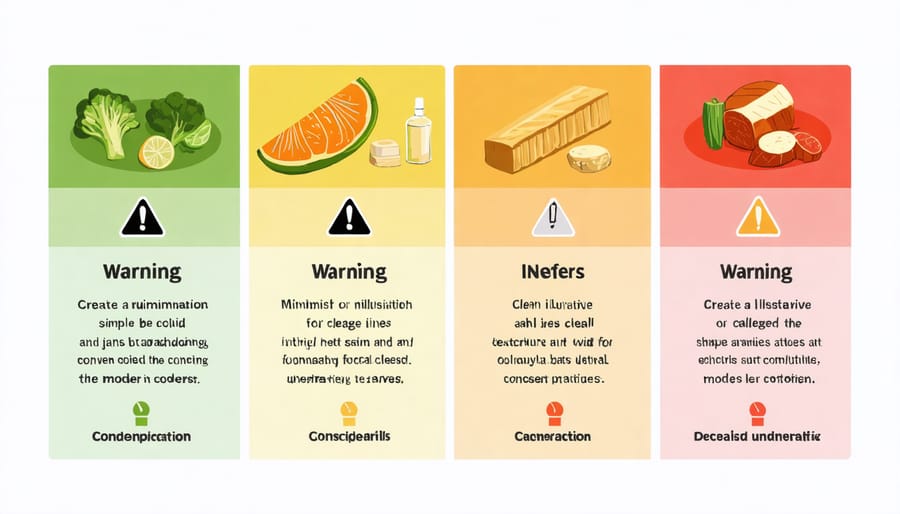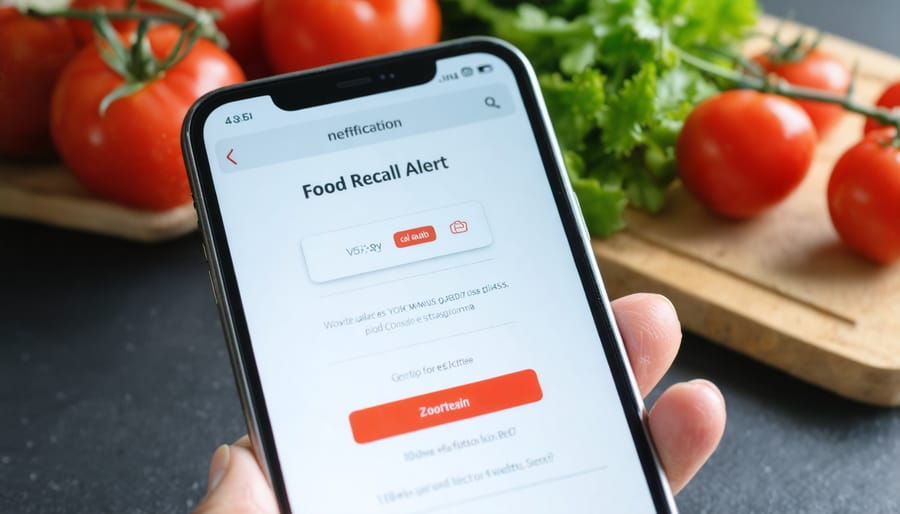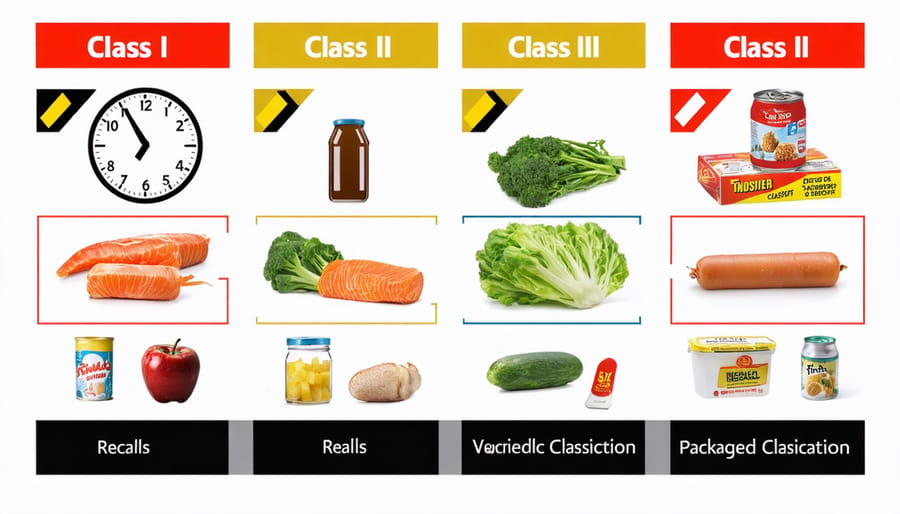Food recalls impact millions of Canadians each year, triggering urgent questions about how long these safety alerts remain active and what steps consumers need to take. While some recalls resolve within days once contaminated products are removed from store shelves, others can extend for months when issues affect shelf-stable foods or widespread distribution networks. Understanding the timeline of food recalls is crucial for protecting yourself and your family from potentially dangerous products.
The duration of a food recall depends on several critical factors: the type of contamination, the product’s shelf life, how widely it was distributed, and how quickly retailers and consumers respond to the alert. Most importantly, consumers need to know that even after a recall officially ends, products may still lurk in home pantries or freezers. This makes it essential to stay informed about current recalls and regularly check stored foods against recall databases, particularly for items with long shelf lives.
Understanding Food Recall Duration
Types of Food Recalls
In Canada, food recalls are classified into three main types based on their health risk severity. Class I recalls pose the highest risk, involving situations where exposure to the food product may cause serious health consequences or death. These recalls typically remain active until all affected products are accounted for, which can take several weeks to months.
Class II recalls involve situations where exposure to the contaminated food may cause temporary adverse health consequences but is unlikely to result in serious health issues. These recalls usually last between two to four weeks, depending on the product’s distribution and the effectiveness of the recall process.
Class III recalls represent the lowest risk level, involving situations where exposure to the food is unlikely to cause adverse health consequences. These recalls often conclude within one to two weeks, though the exact duration depends on factors such as product shelf life and distribution scope.
The Canadian Food Inspection Agency (CFIA) maintains active oversight throughout the recall period, regardless of classification. They work with manufacturers and retailers to ensure affected products are removed from the market and properly disposed of, extending the recall period if necessary until all safety concerns are addressed.

Factors Affecting Recall Length
Several key factors determine how long a food recall remains active. The severity of the health risk is the primary factor, with Class I recalls (posing serious health risks) typically lasting longer and requiring more extensive monitoring than Class II or III recalls. The distribution scope also plays a crucial role – products distributed nationally or internationally often need more time for complete removal than those limited to specific regions.
The effectiveness of the company’s recall communication and response system significantly impacts the duration. Companies with robust tracking systems and clear communication channels can often complete recalls more quickly. The product’s shelf life is another important consideration, as recalls for non-perishable items may remain active longer than those for perishables.
Consumer response and return rates also affect recall length. When consumers promptly return or dispose of recalled products, the recall process can conclude more quickly. Additionally, the time required for investigation and implementing corrective measures by both the company and regulatory authorities can extend the recall period, especially if systemic issues are identified that need addressing.
The Food Recall Process in Canada
Government Oversight and Procedures
The Canadian Food Inspection Agency (CFIA) plays a central role in managing food recalls across the country. When a food safety issue is identified, the CFIA works closely with food manufacturers and distributors to implement and oversee the recall process.
The duration of a recall largely depends on how effectively companies can remove affected products from the market. The CFIA monitors this process through a three-level classification system based on health risk: Class I (high risk), Class II (moderate risk), and Class III (low risk). Higher-risk recalls typically receive more urgent attention and resources.
During a recall, the CFIA conducts effectiveness checks to verify that companies have properly notified all customers and removed affected products from store shelves. These checks continue until the CFIA is satisfied that the recall has been completed successfully. The agency may also conduct follow-up inspections at manufacturing facilities to ensure that the underlying issues have been resolved.
A recall officially ends when the CFIA determines that affected products have been successfully removed from the marketplace and any necessary corrective actions have been implemented. However, even after a recall ends, the CFIA maintains documentation and may continue monitoring the situation to prevent similar issues from occurring in the future.
For consumers, it’s important to stay informed about active recalls through the CFIA’s recall database and follow any specific instructions provided during the recall period.

Consumer Notification and Response
When a food recall is issued in Canada, consumers are notified through multiple channels to ensure widespread awareness. The Canadian Food Inspection Agency (CFIA) maintains a comprehensive database of latest food recalls in Canada and distributes this information through their website, social media platforms, and email notification system.
Upon learning about a recall, consumers should immediately check their homes for the affected products. If you find a recalled item, either return it to the store where it was purchased for a full refund or dispose of it properly. Keep your receipt if possible, but most retailers will accept returns of recalled products even without proof of purchase.
It’s important to stay informed by signing up for CFIA’s email alerts and regularly checking their recall database. Even if you’ve consumed a recalled product before the announcement, monitor yourself for potential symptoms of foodborne illness and seek medical attention if necessary.
Remember to check both your refrigerator and pantry, as some recalled items may have a long shelf life. If you’ve frozen any recalled products, they should also be discarded, as freezing doesn’t eliminate all food safety risks. When in doubt about whether a product in your home is part of a recall, contact the manufacturer or retailer for clarification.
Protecting Yourself During Food Recalls
Checking for Active Recalls
Staying informed about active food recalls is crucial for protecting your family’s health. The Government of Canada’s Food Inspection Agency (CFIA) maintains a comprehensive online database of current food recalls that you can check regularly. You can sign up for email notifications to receive immediate alerts when new recalls are issued.
Mobile apps like “Recalls and Safety Alerts Canada” provide real-time updates directly to your smartphone. Social media platforms, particularly the CFIA’s official Twitter and Facebook accounts, also share timely information about new recalls.
When checking your pantry for recalls, make sure to review both current and recent recalls, as some products may have longer shelf lives. Local grocery stores often post recall notices near the customer service desk or entrance, and many retailers now send direct notifications to customers who purchased affected items through loyalty programs.
Remember to check both brand names and product codes when reviewing recalls, as similar products from the same manufacturer may not all be affected. If you’re unsure about a product’s safety, contact the manufacturer or retailer directly for clarification.

Safe Food Handling During Recalls
When dealing with recalled food products, it’s essential to take proper precautions to protect your family during recalls. Start by immediately checking your kitchen for the affected products, including the specific batch numbers and best-before dates mentioned in the recall notice. If you find recalled items, seal them in a plastic bag before disposing of them to prevent accidental consumption.
Clean and sanitize any surfaces, utensils, or containers that may have come into contact with the recalled food. Use hot, soapy water followed by a sanitizing solution to ensure thorough disinfection. Pay special attention to cutting boards, countertops, and refrigerator shelves where the recalled items were stored.
Keep recall notices accessible until the recall period ends, and inform family members about the affected products. If you’ve already consumed recalled items, monitor yourself for symptoms associated with the recall reason (such as foodborne illness) and seek medical attention if necessary.
Consider taking photos of recalled product packaging before disposal, as this information might be needed for reimbursement claims. Stay informed about recall updates through Health Canada’s website and your local health authority’s communications.
Food recalls remain active until health authorities confirm that the affected products no longer pose a risk to public safety. While most recalls are resolved within weeks or months, it’s crucial to stay informed and maintain vigilance about food safety in your home. Remember to regularly check your pantry and refrigerator against current recall notices, and don’t hesitate to dispose of or return products included in active recalls.
Keep your food safety knowledge up to date by monitoring Health Canada’s recall database and following proper food handling practices. Even after a recall ends, the lessons learned about food safety remain valuable for protecting yourself and your family. Stay connected with reliable sources of food safety information, act promptly when recalls are announced, and maintain good food storage practices.
By understanding how food recalls work and staying informed about current notices, you can make confident decisions about the food products in your home. Remember that food safety is an ongoing commitment, and being proactive about recall awareness is an essential part of maintaining a healthy household.

